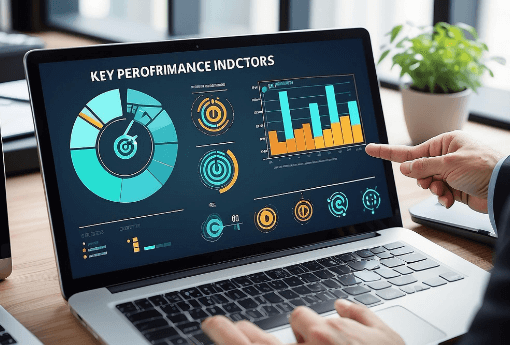Procurement Key Performance Indicators are metrics used to track how well an organization’s procurement process is working. They help you make sure that procurement supports the company’s goals, keeps costs under control, and delivers good value.
Good procurement KPIs highlight what’s working well and what needs improvement. They help businesses simplify workflows, build better supplier relationships, ensure compliance, reduce risks, and find ways to save money.
Using advanced tools like procurement analytics, can help companies gain actionable insights into these metrics, enabling data-driven decision-making.
Why Are Procurement KPIs Important?

Procurement KPIs form the most important part of business strategy and are a tool that:
- Measures Performance: KPIs afford the procurement process a streamlined picture and help understand efficiency and effectiveness.
- Driving Accountability: They set benchmarks for the procurement team, securing the ownership of target accomplishment.
- Improving Supplier Management: Monitoring supplier performance is a path towards better relationships with greater delivery reliability.
- Improvement in Cost Efficiency: Such KPIs bring significant efficiencies by saving costs without cutting down the quality.
It supports strategic decision-making, and organizations can optimize procurement strategies and adapt to market changes with data-backed insights.
Top 10 Procurement Key Performance Indicators

To optimize procurement operations, organizations should focus on these critical KPIs:
1. Compliance Rate
- What it Measures: Adherence to procurement policies, contracts, and regulations.
- Why it Matters: Ensures governance, minimizes risks, and reduces unauthorized spending.
- How to Improve: Train employees on policies, automate approval workflows, and monitor policy breaches.
2. Supplier Defect Rate
- What it Measures: Percentage of defective products or services received from suppliers.
- Why it Matters: Reflects the reliability of vendors and the quality of their deliveries.
- How to Improve: Implement quality checks, negotiate stricter quality terms, and collaborate with suppliers on improvements.
3. PO and Invoice Accuracy
- What it Measures: Error frequency in POs and invoices.
- Why it Matters: Errors cause delays, disputes, and additional costs.
- How to Improve: Leverage digital tools for automated invoice processing and verification.
4. Rate of Emergency Purchases
- What it Measures: Proportion of unplanned or urgent purchases.
- Why it Matters: Indicates inefficiencies in demand forecasting and procurement planning.
- How to Improve: Improve forecasting accuracy and maintain adequate inventory levels.
5. Supplier Lead Time
- What it Measures: Average time taken by suppliers to deliver goods after placing an order.
- Why it Matters: Shorter lead times ensure smoother operations and reduce stockouts.
- How to Improve: Work with suppliers to optimize delivery schedules and logistics.
6. PO Cycle Time
- What it Measures: Time it takes to produce, approve, and process a purchase order.
- Why it Matters: This will impact the pace of procurement and operational efficiency.
- How to Improve: Automate the PO process and streamline approval workflows.
7. Vendor Availability
- What it Measures: The ability of suppliers to provide consistent demand fulfillment.
- Why it Matters: Business continuity and minimal disruption to operations
- How to Improve: Establish solid relationships with vendors and increase the vendor base.
8. Cost Per Invoice and PO
- What it Measures: The cost to process each invoice or PO.
- Why it Matters: Low values represent streamlined and efficient processes.
- How to Improve: Implement procurement management software to reduce manual intervention.
9. Spend Under Management
- What it Measures: Percentage of total organizational spend managed through formal procurement processes.
- Why it Matters: Higher values indicate greater oversight and control of costs.
- How to Improve: Centralize procurement functions and implement policy compliance.
10. Savings Achieved
- What it Measures: Cost savings from procurement.
- Why it Matters: It represents the value that strategic sourcing and effective negotiations provide.
- How to Improve: Competitive bidding, supplier negotiation, and demand aggregation.
Procurement Key Performance Indicators Examples
Here are a few practical examples of KPIs tailored to procurement:
- Percentage of Preferred Supplier Usage: Tracks the reliance on preferred vendors to ensure consistent quality and cost-effectiveness.
- Supplier Diversity Index: Monitors the proportion of procurement spend allocated to diverse suppliers.
- Contract Compliance Rate: Measures adherence to terms and conditions outlined in contracts.
- Inventory Turnover Ratio: Evaluates how efficiently inventory is managed in relation to procurement activities.
Strategic Selection of Key Performance Indicators in Procurement Processes

Selecting the right KPIs is a critical step in optimizing procurement performance. Here are some tips for strategic selection:
- Align KPIs with Business Objectives
- Ensure that selected KPIs support organizational goals, such as cost reduction or supply chain resilience.
- Leverage Custom Analytics Services
- Use custom analytics services to design tailored metrics that address unique procurement challenges.
- Focus on Actionable Metrics
- Choose KPIs that provide insights into areas for improvement and can drive meaningful action.
- Regular Review and Refinement
- Periodically assess KPIs to ensure they remain relevant to changing business needs and market conditions.
- Engage Stakeholders
- Collaborate with cross-functional teams to define KPIs that reflect shared priorities.
Strategically selecting and tracking procurement KPIs, can help businesses to continuously improve and strengthen supplier relationships, while attaining sustainable growth.
Final Thoughts
Procurement KPIs are the bedrock of effective procurement management. They not only provide clarity into the performance of procurement processes but also highlight areas for optimization. Organizations that leverage tools like procurement analytics and custom analytics services can unlock the full potential of their procurement strategies. Focusing on data-driven decision-making, can reduce costs, enhance efficiency, and build resilient supply chains for businesses.
Frequently Asked Questions (FAQs)
Q1. What are the most critical procurement KPIs for small businesses?
The most critical procurement KPIs for small businesses include cost per invoice, supplier defect rate, and compliance rate, which help them manage budgets effectively and ensure quality.
Q2. How often should procurement KPIs be reviewed?
Procurement KPIs should ideally be reviewed monthly or quarterly to track progress and make timely adjustments.
Q3. Can procurement KPIs improve supplier relationships?
Yes, monitoring KPIs like supplier lead time and defect rate helps identify problems early, and better communication and collaboration with the vendors are also promoted.
Q4. Which tools are used to track procurement KPIs?
Procurement analytics platforms and ERP systems are great tools for tracking and analyzing procurement KPIs.
Q5. How can I decrease the cost per invoice and PO?
Automating procurement processes, reducing manual interventions, and negotiating better terms with suppliers can lower costs.



